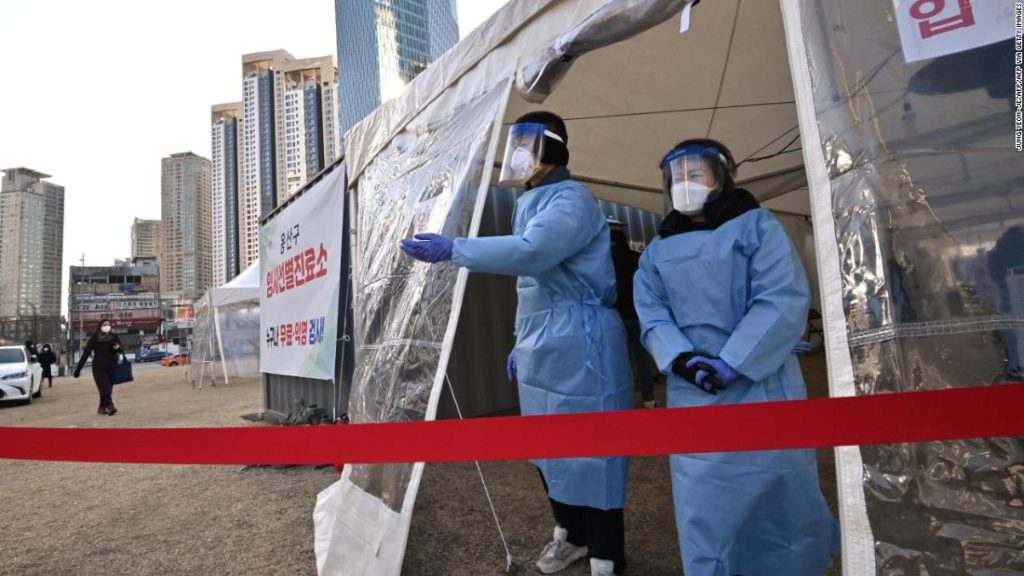Despite being among the first countries to be hit by the virus, South Korea has managed to avoid the type of stringent lockdown measures seen elsewhere in the world, thanks largely to a combination of aggressive testing and sophisticated track and trace techniques.
But as the pandemic drags on into winter, the emergence of a so-called “third wave” has resulted in an apparently untraceable rise in new infections.
Speaking Wednesday, senior Health Ministry official Yoon Tae-ho urged people to participate fully with social distancing measures in the Seoul Metropolitan area, which accounts for around half of the country’s 51 million-strong population. Those restrictions are currently at level 2.5 on the country’s scale, with level 3 being a de facto lockdown.
Yoon said officials are currently consulting with experts, local governments, and the anti-virus work committee about whether to raise restrictions to level 3.
Such a move would likely constitute “a big social change,” warned Yoon and could result in harm to small businesses and the self-employed.
On Tuesday, South Korea reported 1,078 new cases, the highest daily count since the start of the pandemic, bringing the national total to 45,442. Some 226 patients are in critical condition, while there were an additional 12 deaths Tuesday, increasing total fatalities to 612.
On Wednesday, the acting Mayor of Seoul, Seo Jung-hyup, warned the capital was facing a critical shortage of hospital space, with 77 of the city’s 78 ICU beds now occupied by coronavirus patients.
While these numbers pale in comparison to those seen in much of Europe or the United States, the latest spike is demonstrative of the additional difficulties caused by freezing winter temperatures — which drive people indoors, where infection is easier — and growing fatigue over restrictions and precautions.
According to a tally by Johns Hopkins University, cases in South Korea have been steadily increasing since mid-November, and the country has been slowly enacting more restrictions and social distancing rules in response.
“The church held gatherings four times a week for seven weeks in a confined space for a prolonged period of time, meaning the possibility of droplets spreading among participants was very high,” Park Yoo-mi, a local health official, told KBS. “We are further investigating the matter.”
Winter has long been expected to bring a spike in cases through much of the northern hemisphere, but particularly in countries where temperatures are lowest: greater ventilation, which can aid in preventing infections, is far more difficult when average daytime temperatures are below -5C (23F) as in Seoul this week.
Speaking Tuesday, Jung Eun-kyeong, director of the Korea Disease Control and Prevention Agency, said “the third wave is different from the previous two. It’s the most critical point since the Covid-19 pandemic began.”
In neighboring — and equally cold — Japan, restrictions have also been ramped up in response to a new wave of cases.
On Tuesday, an additional 2,410 new cases and 45 deaths were recorded across Japan, bringing the respective totals to 184,754 cases and 2,701 deaths. The number of patients in intensive care is at its highest level all year, health officials warned.
“Please do not get used to the coronavirus,” Japan Medical Association President Toshio Nakagawa said at a briefing last month, as cases started to rise. “Please do not underestimate the coronavirus.”
Jake Kwon and Gawon Bae reported from Seoul, South Korea. James Griffiths reported from Hong Kong.
You may also like
-
UK coronavirus variant has been reported in 86 countries, WHO says
-
NASA technology can help save whale sharks says Australian marine biologist and ECOCEAN founder, Brad Norman
-
California Twentynine Palms: Explosives are missing from the nation’s largest Marine Corps base and an investigation is underway
-
Trump unhappy with his impeachment attorney’s performance, sources say
-
Lunar New Year 2021: Ushering in the Year of the Ox

